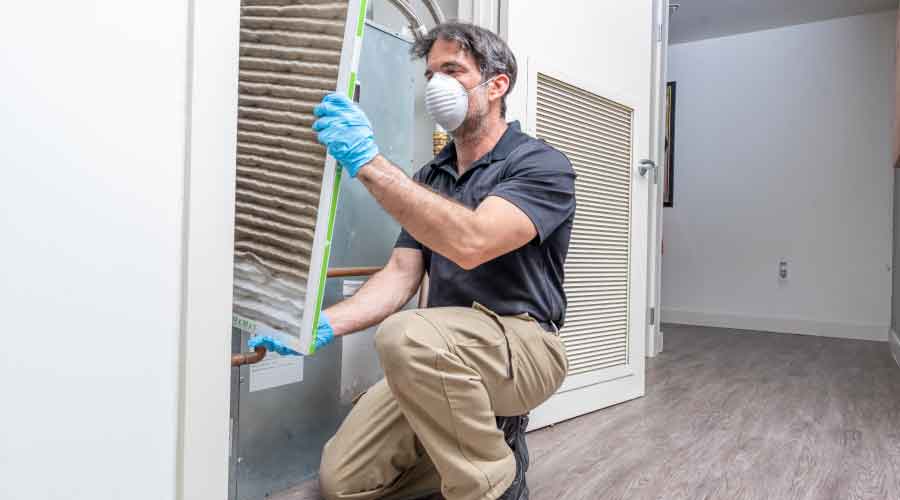
8 Steps to Improve IAQ
Strategies include conducting facility assessments, communicating results, leveraging federal funding and understanding the climate co-benefits of energy efficiency. December 5, 2022
By Dan Hounsell, Senior Editor
The COVID-19 pandemic has heightened the already high priority that maintenance and engineering managers placed on indoor air quality (IAQ). From air filtration to ventilation and UVC technology to fight airborne diseases and contaminants, managers have revisited the benefits and challenges of updates to processes and products.
The Center for Green Schools recently hosted a webinar that focused on conducting facility assessments, communicating results, leveraging federal funding and understanding the climate co-benefits of energy efficiency. Panelists from Ann Arbor Public Schools in Michigan and the Smart Energy Design Assistance Center at the University of Illinois at Urbana—Champaign discussed firsthand experiences, strategies and tactics for improving IAQ and energy efficiency through building assessments. Among key takeaways from the panelists are these:
All aspects of a facility assessment are important. Conducting an assessment includes collecting key data, conducting an on-site assessment, generating a report and communicating a plan of action.
Key data collection includes information about utilities, HVAC systems, operations schedules and building plans. This is an important step in helping prepare the tools needed for an assessment, highlighting potential focus areas and helping with initial benchmarking.
Conducting an on-site assessment entails taking photos, reviewing building controls, documenting health and safety issues and, in the case of IAQ, assessing the building envelope, sampling air flow rates, and looking at carbon dioxide levels and the overall condition of HVAC equipment.
Generate a report after the on-site assessment, highlighting recommendations and their impacts, site conditions and a prioritized list of where to start.
Communicate the plan of action, using the assessment report to identify projects to implement first and those that can wait, identify funding sources for each project, and communicate additional benefits for each project.
Use American Rescue Plan ESSER funding to hire a third party to complete ventilation assessments or retrocommissioning and make necessary upgrades that improve IAQ. Many school districts might lack the staff or tools required to assess the systems impacting IAQ across their entire district and need to bring in the support of outside experts.
Communication is key to the comfort of staff and community members. As a result of the facility assessments and planning done at Ann Arbor Public Schools, the school system released a study to assure the public they were making their buildings safe and mitigating transmission of COVID-19. This communication of their action plan allowed community members to feel more comfortable sending their students back to school.
Staff can take action to keep an eye on indoor IAQ. A facility assessment can seem like a huge undertaking, but there are smaller steps facilities staff can take to keep an eye on indoor air quality in your buildings. Assessing filtration systems, focusing on preventive maintenance and monitoring carbon monoxide levels are a few important actions departments can take.
Dan Hounsell is senior editor of the facilities market. He has more than 25 years of experience writing about facilities maintenance, engineering and management.
Next
Read next on FacilitiesNet












